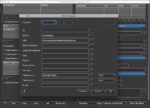
New camera adds content authenticity metadata to photos, helping in the fight against disinformation. A content credential proves your picture is real. You probably want that. We look at how it works and what it means.

Enter controlled vocabulary terms with just a few keystrokes in any Photo Mechanic field that has a flyout menu
In Photo Mechanic and Photo Mechanic Plus, you can use the Autocomplete type-ahead feature to enable a controlled vocabulary right in your Keywords field.
In my last post, I entered a keyword for the name of my cat Donut by typing just three characters - “Don[enter]”.

Take a second glance at your caption and keywords to do a better job of anticipating search queries. The Keywords field is just waiting to serve you by - among other things - providing a place for potential search terms that didn’t make it into your caption.

It’s time to “fall back” an hour – again For most US-based photographers, Sunday, November 1 marked the time to readjust camera clocks at the end of Daylight Saving Time. In most of Europe, the fateful date was last Sunday, October 25. And in most of Asia, countries don’t take part in the twice-yearly festival …

Camera Bits has released Photo Mechanic Plus, the company’s new digital asset management product for photographers. Photo Mechanic Plus combines a full-featured instance of Photo Mechanic 6 with new photo cataloging capabilities.
Photographers have very different digital asset management needs than the usual customers of DAM systems, like marketing departments, for example.

Google Images Licensable feature allows photographers to place clickable contact information on images The IPTC announced today that Google’s new Licensable feature is now live on Google Images. The new feature allows photographers to trigger a badge that identifies photos as “Licensable” by filling in the correct fields in their photo’s IPTC metadata. I reported …

Which of Photo Mechanic’s two IPTC editors should you use and when? Photo Mechanic has two, count ‘en two, big fancy metadata editor dialogs – Metadata (IPTC) Info and Metadata (IPTC) Template. What’s the difference? When should we use one or the other? Let’s look at both editors in some depth to see when – …

Google and a persistent photographer each provide a victory for artists’ rights Beginning today, May 27, 2020, Google Images will display image rights metadata just under an image’s preview rather than hiding it behind a link. And in a separate victory for artists rights metadata, website hosting company SquareSpace has announced better support for …

The entire Licensors structure is now available in Photo Mechanic; Google Licensable will expose two of the fields Photo Mechanic has released support for the PLUS Licensor metadata fields that will be exposed in the new Google Licensable feature. You’ll find it in Photo Mechanic 6, Build 4538, and later. (The fields have been in …

Optimizing images for WordPress. There’s been a lot of digital ink spilled on the subject. There are tons of urban myths swirling around. There’s stuff that’s true, stuff that was true five years ago, stuff that was never true, and stuff that’s way over complicated or just plain wrong.
But the real lowdown, circa early 2020, is stupid simple.
You don’t optimize images for your WordPress site. WordPress does it.
All you have to do is upload a good quality image, at the largest size your site will need, saved at a JPEG compression of 82 or higher.
And, by the way, make sure you have ImageMagick enabled as your imaging library.
That’s it.
Now here’s the long-read version